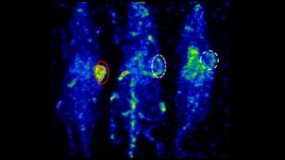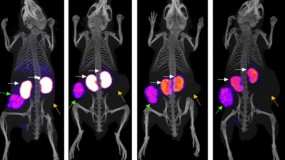The X-CUBE is a high throughput preclinical CT imager enabling in-vivo tissue quantification
The X-CUBE allows for fast whole body mouse and rat CT imaging at extremely low dose and excellent soft tissue contrast. Light weighted thanks to a self-shielded imaging unit it is a truly mobile in vivo scanner.
CT imaging enables a wide range of non-invasive and longitudinal tissue measurement applications in your preclinical models. These include orthotopic and subcutaneous tumour volume, tumour metastases volume, lung volume, heart ejection fractures and blood pool volume, and more.
Intuitive and wireless software combined with our multimodal small animal bed allow for easy and modular multimodal imaging along with the γ -CUBE (SPECT) and β -CUBE (PET).
X-CUBE preclinical CT imager testimonials
|
γ-CUBE |
X-CUBE |
β-CUBE |
|
| GP mouse protocol | |||
|
Field Of View
axial x transaxial
|
12 mm x 30 mm | 35 mm x 63 mm | 130 mm x 72 mm |
|
Spatial Resolution
*general purpose mouse collimator
|
< 0.6 mm | 0.05 mm | < 1 mm |
| Sensitivity | 0.12 % | - | > 10 % |
|
Reconstruction Code
on board GPU-based
|
3D MLEM, 3D OSEM | FDK, ISRA | FBP, 3D MLEM, 3D OSEM |
|
Weight
over footprint of 54cm x 54cm
|
< 80 kg | < 100 kg | < 90 kg |
Existing X-CUBE customers
Click on the tabs below to find out more about our customers, and how they are using the X-CUBE in their facilities.
Documents
-
Molecubes Brochure 2022
Download (3.66 MB) -
Molecubes - REMI External Reconstruction Server
Download (1.42 MB) -
Molecubes - Mouse Hotel
Download (1.64 MB) -
Lago Optical CT
Download (2.01 MB)
Catalogues
-
Preclincial Brochure EU Version 1.1
Download (3.7 MB)






